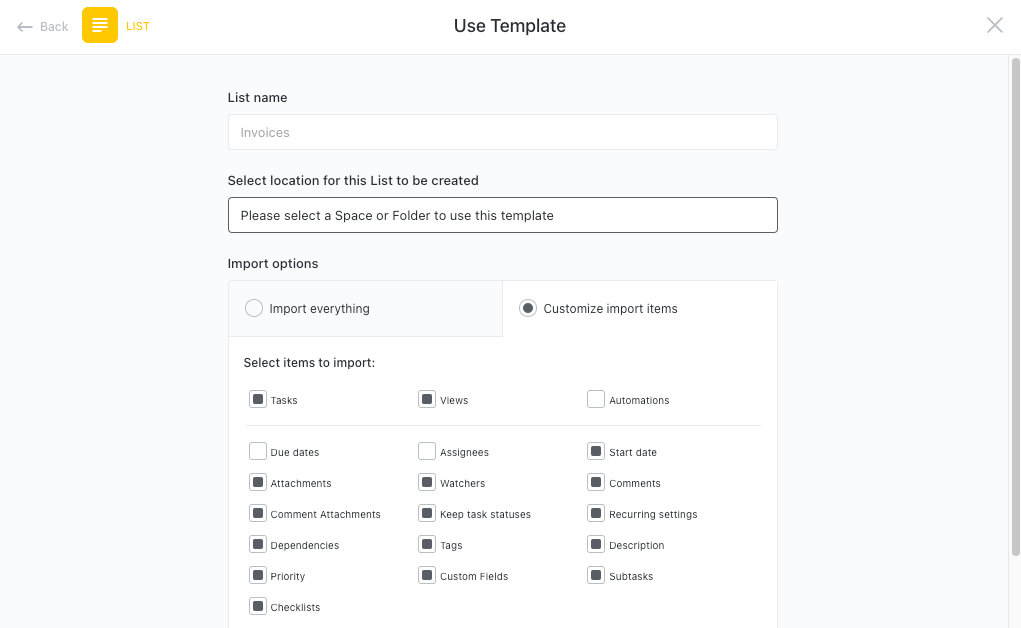Are you looking for an effective way to plan and organize your social media content? ClickUp's Social Media Content Plan Template is the perfect tool for any social media marketing team.
This template makes it easy to plan, create, and organize content all in one place. It helps you:
- Set goals and objectives to measure success
- Create a consistent stream of high-quality content
- Organize and schedule posts across all platforms
Take the stress out of planning social media content with ClickUp's Social Media Content Plan Template!
Benefits of a Social Media Content Plan Template
Creating engaging content for your social media channels is an ongoing task. A social media content plan template can help you stay organized and take the guesswork out of your strategy. Here are some of the benefits of such a template:
- Save time by creating an easy-to-follow plan for creating content
- Stay organized with a clear structure for planning, scheduling, and tracking your social media content
- Increase engagement by providing users with a consistent stream of new, relevant content
- Stay on top of the competition by staying up to date on industry trends
Main Elements of a Social Media Content Plan Template
ClickUp's Social Media Content Plan Template is designed to help you create, plan, and manage your social media content. This Task template includes:
- Custom Statuses: Create tasks with various custom statuses to keep track of the progress of each social media post
- Custom Fields: Categorize and add attributes to manage your social media content such as Social Media Platform, Content Progress, Designer/Editor, Month, and Copywriter
- Custom Views: Start with this Task template and build out your ClickUp workflow which includes List, Gantt, Workload, Calendar, and more
- Project Management: Improve social media content tracking with comment reactions, nested subtasks, multiple assignees, and priorities
How to Use a Social Media Content Plan Template
Creating a social media content plan is an important step in any successful digital marketing strategy. Here's how you can use ClickUp's social media content plan template to get started:
1. Identify your goals
Before creating your content plan, you should identify the goals you want to achieve. This could include increasing engagement, building brand awareness, or driving website traffic.
Use a Doc in ClickUp to brainstorm ideas for your social media goals.
2. Determine your target audience
You'll also need to identify who your target audience is and what kind of content they would be likely to respond to. Tailoring your content to the interests of your target audience is key to keeping them engaged and interested.
Create a Board view in ClickUp to keep track of your target audience and the type of content they prefer.
3. Create a content calendar
Once you have identified your goals and target audience, it's time to start planning out the content you will be creating. Create a content calendar where you can assign tasks, deadlines, and other details.
Use a Calendar view in ClickUp to plan out your content calendar and assign tasks to your team.
4. Monitor and adjust
Finally, it's important to review your content plan regularly and make adjustments as needed. If you find that certain content is not resonating with your audience, make sure to adjust your plan accordingly.
Set a recurring task in ClickUp to review and adjust your content plan.
Get Started with ClickUp's Social Media Content Plan Template
Marketing teams can use this Social Media Content Plan Template to help everyone stay on the same page when it comes to creating, scheduling, and tracking social media posts.
First, hit “Add Template” to sign up for ClickUp and add the template to your Workspace. Make sure you designate which Space or location in your Workspace you’d like this template applied.
Next, invite relevant members or guests to your Workspace to start collaborating.

Now you can take advantage of the full potential of this template to create a social media content plan:
- Create a project for each social media platform
- Assign tasks to team members and designate a timeline
- Brainstorm ideas for content and create a content calendar
- Organize tasks into categories to keep track of progress
- Set up notifications to stay up-to-date on progress
- Hold regular meetings to discuss progress and any issues
- Monitor and analyze tasks to ensure maximum productivity
Get Started with Our Social Media Content Plan Template Today







